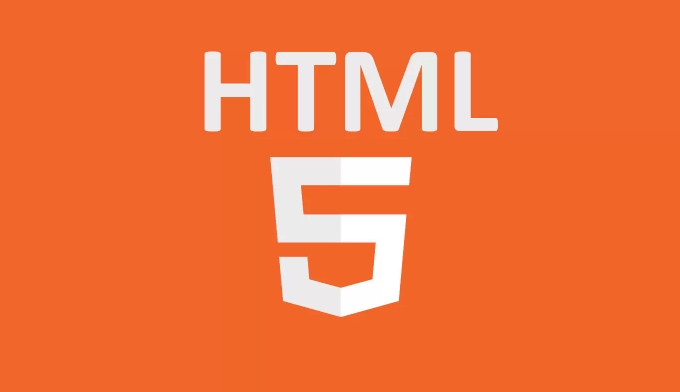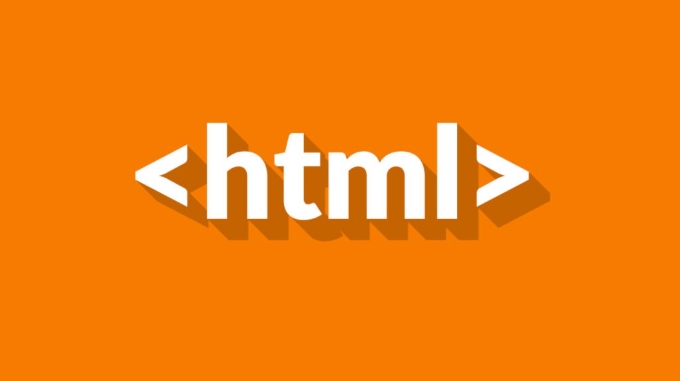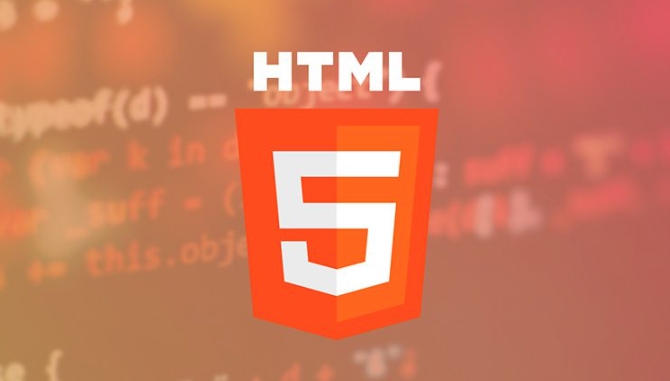The method to add placeholder text in the HTML input box is to use the placeholder attribute, which specifically includes the following steps and precautions: 1. The basic writing method is to directly add the placeholder attribute in the input tag, such as <input type="text" placeholder="Please enter your name">; 2. It is recommended to use it with the label tag to improve accessibility and user experience. For example, the user name input box should combine label and placeholder; 3. Pay attention to the use of CSS when customizing the style::placeholder style, and the color should not be too light; 4. Placeholder should not be relied on as the only explanation, and important tips should be presented through label or extra text; 5. Test the performance of the mobile terminal, because different platforms may differ; 6. Optional dynamic control of placeholder content, and can be implemented through JavaScript to modify placeholder attributes, which is suitable for complex form logic.

Adding placeholder text to the HTML input box is actually very simple, you can do it with placeholder attribute. The function of this attribute is to display a prompt text when the user has not entered the content, such as "Please enter the user name", which will automatically disappear as soon as the user enters it.

Let’s take a look at some common ways to use and precautions.

Basic writing method: directly add the placeholder attribute
This is the most commonly used and easiest method:
<input type="text" placeholder="Please enter your name">
The browser will automatically display this text when the input box is empty, and it disappears after the user starts typing. Supported types include common input types such as text , email , number , search etc.

Use it with labels more clearly
Although placeholder can provide prompt information, it is not a reason to replace label tags. Because once the user enters the content, the placeholder will be invisible. If there is no label at this time, the user may forget what the input box is for.
The recommended writing method is as follows:
<label for="username">Username:</label> <input type="text" id="username" placeholder="Example: zhangsan">
This not only retains accessibility but also improves the user experience.
Pay attention to style and compatibility issues
The color should not be too light : by default, the placeholder text has a lighter color, but sometimes the designer wants to be more prominent. You can customize it with CSS:
::placeholder { color: #999; font-style: italic; }Don't rely on placeholder for instructions : Some users may skip the placeholder prompt directly, so it is best to place important instructions in the label or the next prompt text.
The performance of mobile terminals is slightly different : different mobile systems or browsers may handle placeholder differently. It is recommended to test the display effect on the main platforms.
Special case: Dynamic control placeholder (optional)
If you need to dynamically modify the placeholder content with JavaScript, you can also do this:
<input type="text" id="dynamicInput" placeholder="initial prompt"> <script> document.getElementById('dynamicInput').placeholder = 'New prompt content'; </script>
However, this approach is rare and is usually only needed when the form logic is more complex.
Basically that's it. It is not complicated to write, but to make the user experience better, you still need to pay more attention to details.
The above is the detailed content of How to add a placeholder text in an HTML input field?. For more information, please follow other related articles on the PHP Chinese website!

Hot AI Tools

Undress AI Tool
Undress images for free

Undresser.AI Undress
AI-powered app for creating realistic nude photos

AI Clothes Remover
Online AI tool for removing clothes from photos.

Clothoff.io
AI clothes remover

Video Face Swap
Swap faces in any video effortlessly with our completely free AI face swap tool!

Hot Article

Hot Tools

Notepad++7.3.1
Easy-to-use and free code editor

SublimeText3 Chinese version
Chinese version, very easy to use

Zend Studio 13.0.1
Powerful PHP integrated development environment

Dreamweaver CS6
Visual web development tools

SublimeText3 Mac version
God-level code editing software (SublimeText3)

Hot Topics
 Applying Semantic Structure with article, section, and aside in HTML
Jul 05, 2025 am 02:03 AM
Applying Semantic Structure with article, section, and aside in HTML
Jul 05, 2025 am 02:03 AM
The rational use of semantic tags in HTML can improve page structure clarity, accessibility and SEO effects. 1. Used for independent content blocks, such as blog posts or comments, it must be self-contained; 2. Used for classification related content, usually including titles, and is suitable for different modules of the page; 3. Used for auxiliary information related to the main content but not core, such as sidebar recommendations or author profiles. In actual development, labels should be combined and other, avoid excessive nesting, keep the structure simple, and verify the rationality of the structure through developer tools.
 How to group options within a select dropdown using html?
Jul 04, 2025 am 03:16 AM
How to group options within a select dropdown using html?
Jul 04, 2025 am 03:16 AM
Use tags in HTML to group options in the drop-down menu. The specific method is to wrap a group of elements and define the group name through the label attribute, such as: 1. Contains options such as apples, bananas, oranges, etc.; 2. Contains options such as carrots, broccoli, etc.; 3. Each is an independent group, and the options within the group are automatically indented. Notes include: ① No nesting is supported; ② The entire group can be disabled through the disabled attribute; ③ The style is restricted and needs to be beautified in combination with CSS or third-party libraries; plug-ins such as Select2 can be used to enhance functions.
 Implementing Clickable Buttons Using the HTML button Element
Jul 07, 2025 am 02:31 AM
Implementing Clickable Buttons Using the HTML button Element
Jul 07, 2025 am 02:31 AM
To use HTML button elements to achieve clickable buttons, you must first master its basic usage and common precautions. 1. Create buttons with tags and define behaviors through type attributes (such as button, submit, reset), which is submitted by default; 2. Add interactive functions through JavaScript, which can be written inline or bind event listeners through ID to improve maintenance; 3. Use CSS to customize styles, including background color, border, rounded corners and hover/active status effects to enhance user experience; 4. Pay attention to common problems: make sure that the disabled attribute is not enabled, JS events are correctly bound, layout occlusion, and use the help of developer tools to troubleshoot exceptions. Master this
 Configuring Document Metadata Within the HTML head Element
Jul 09, 2025 am 02:30 AM
Configuring Document Metadata Within the HTML head Element
Jul 09, 2025 am 02:30 AM
Metadata in HTMLhead is crucial for SEO, social sharing, and browser behavior. 1. Set the page title and description, use and keep it concise and unique; 2. Add OpenGraph and Twitter card information to optimize social sharing effects, pay attention to the image size and use debugging tools to test; 3. Define the character set and viewport settings to ensure multi-language support is adapted to the mobile terminal; 4. Optional tags such as author copyright, robots control and canonical prevent duplicate content should also be configured reasonably.
 Best HTML tutorial for beginners in 2025
Jul 08, 2025 am 12:25 AM
Best HTML tutorial for beginners in 2025
Jul 08, 2025 am 12:25 AM
TolearnHTMLin2025,chooseatutorialthatbalanceshands-onpracticewithmodernstandardsandintegratesCSSandJavaScriptbasics.1.Prioritizehands-onlearningwithstep-by-stepprojectslikebuildingapersonalprofileorbloglayout.2.EnsureitcoversmodernHTMLelementssuchas,
 How to associate captions with images or media using the html figure and figcaption elements?
Jul 07, 2025 am 02:30 AM
How to associate captions with images or media using the html figure and figcaption elements?
Jul 07, 2025 am 02:30 AM
Using HTML sums allows for intuitive and semantic clarity to add caption text to images or media. 1. Used to wrap independent media content, such as pictures, videos or code blocks; 2. It is placed as its explanatory text, and can be located above or below the media; 3. They not only improve the clarity of the page structure, but also enhance accessibility and SEO effect; 4. When using it, you should pay attention to avoid abuse, and apply to content that needs to be emphasized and accompanied by description, rather than ordinary decorative pictures; 5. The alt attribute that cannot be ignored, which is different from figcaption; 6. The figcaption is flexible and can be placed at the top or bottom of the figure as needed. Using these two tags correctly helps to build semantic and easy to understand web content.
 How to embed content from another site using the html iframe tag?
Jul 04, 2025 am 03:17 AM
How to embed content from another site using the html iframe tag?
Jul 04, 2025 am 03:17 AM
Use tags to embed other website content into your own web page. The basic syntax is:, you can add width, height, and style="border:none;" to control the appearance; in order to achieve responsive layout, you can set the size through percentage or use containers to combine padding and absolute positioning to maintain the aspect ratio, while paying attention to cross-domain restrictions, loading performance, SEO impact, and security policies. Common uses include embedding maps, third-party forms, social media content and internal system integration.
 HTML for email templates tutorial
Jul 10, 2025 pm 02:01 PM
HTML for email templates tutorial
Jul 10, 2025 pm 02:01 PM
How to make HTML mail templates with good compatibility? First, you need to build a structure with tables to avoid using div flex or grid layout; secondly, all styles must be inlined and cannot rely on external CSS; then the picture should be added with alt description and use a public URL, and the buttons should be simulated with a table or td with background color; finally, you must test and adjust the details on multiple clients.






